Sometimes, an organization’s top talent is hidden in plain sight. Rather than looking outward, how can organizations better identify their high potentials? In this article, you’ll gain tips and best practices from our experts on not only how to identify your high potentials, but how to recognize, invest in, and retain them.
Answers From the Experts:
 Lyn Turknett, Co-founder and Co-chair, TLG
Lyn Turknett, Co-founder and Co-chair, TLG
How do we identify the high potentials already in our organizations?
This is a really big question, but here are three things that organizations should likely be thinking about now:
1. Should you be paying more attention to all your talent, not just those selected as high potentials?
2. How do you assure that, in talent reviews, managers really know how to assess potential, and aren’t just recommending people who are top performers – especially top performers who are similar in style?
3. How do you go beyond the typical 9-box – to really be sure you have the talent necessary for a changing future?
Read Lyn’s full article on identifying high potentials here.
What steps can we take to recognize, invest in, and retain them?
Two things are really important – invest in the development of top talent and keep them on the radar at the highest levels of the organization.
1. Investing in the development of people is the best way to retain them, and the best way to be sure that they are ready for the next challenge. I am biased, of course, but our Executive Development Program, a structured individual coaching process, has been used as a way of rewarding and developing top high potential talent for 35 years. Coaching is especially effective when there has been comprehensive assessment so that strengths and areas for growth are identified..
2. Pay attention. The highest levels of talent, those ready soon for the top levels of the organization, need to be on the radar of the executive committee regularly. With the assistance of HR, they need to be shepherding top talent – looking for development opportunities, special projects, and ways to gain experience in varied areas of the business. But in this day and age, we need to pay attention to EVERYONE.
 Bill Dickinson, D. Min, RCC, Senior Consultant, TLG
Bill Dickinson, D. Min, RCC, Senior Consultant, TLG
How do we identify the high potentials already in our organizations and what can we do to retain them?
The questions we pose this month are valid and vital. Keeping, celebrating, and developing talent is the foundation of people leadership. Employees who work for us want to be challenged and valued. Yes, they also want to be recognized. Every employee and colleague comes with their own skill sets. As people leaders, ours is to discover and uncover the very best within everyone; and, even those whom we feel want to do the bare bones.
May I suggest we get back to the basics. Facilitating consistent, empathic, and supportive 1:1’s enables a people leader to learn as well as provide guidance and direction. The key here is in the questions we ask. So, in under to really understand fit and energy and potential we self-disclose and we ask.
Framing – I want to better lead, support, and develop you in order to ensure you are fulfilled and engaged here at our company. I need to up my own game in demonstrating my commitment to you (and the team). So, as I nuance my approach with you be patient and help me to learn as well.
1. Talk to me about what most excites you about your role? [Validate as appropriate]
2. What in your work is feeling rewarding? But, help me understand what may feel draining or even boring?
3. I can share with you 3 skills/competencies that are clearly yours—you shine. Before I do, what do you believe are your 3 strongest competencies? [Be prepared to share those skills/competencies and why].
4. What would you like to try or do differently in your role? Something that might stretch or invigorate you—even in another department?
5. What am I missing in my support of you? Is there a skill you want to elevate?
6. How can I help you create 2 professional development opportunities, and even a time frame?
7. I’d like to better recognize you (and our team) for your vital work. What are your preferences for recognition, please?
Summary:
Let the answers inform and even challenge you, as a leader. Make a commitment to do your best to understand, validate, and empower this team member. Be creative with options. Talk to a peer about what they provide for growth and development. Hold yourself accountable and find this to be an opportunity for your own credibility as a people leader. Anything you need from your own leader? Good Luck.
 Robin Mladinich, Senior Consultant, TLG
Robin Mladinich, Senior Consultant, TLG
How do we identify the high potentials already in our organizations?
Replacing talent who leave our organizations is costly and time consuming. More now than ever, it is important to identify these high potentials and invest in retaining them. Here are some key attributes to observe when identifying high potentials:
- A growth mindset – High potentials want to learn new skills and ways of doing things that will help the business holistically.
- Drive – High potentials take initiative, ask lots of questions, and have a strong interest in the overall strategy of the company and what the future holds. They are curious and engaged.
- Attitude – High potentials contribute to the positive company culture and work environment. They are autonomous yet collaborative. People want to work with them. They make great teammates and share recognition.
- Exhibit leadership potential – High potentials take on challenging assignments, handle stressful situations calmly, seek feedback and make adjustments. They are eager to take leadership positions and solve problems.
What steps can we take to recognize, invest in, and retain them?
“Train people well enough so they can leave, treat them well enough, so they don’t want to.” This is one of my favorite quotes from Richard Branson, founder of Virgin Atlantic. This should be the motto for every company to recognize, invest in, and retain talent. Here are five ways organizations can retain their high potentials:
1. Invest in their development – What are their career goals and what is important to them? Create a personalized career development plan, so they have a clear path. Help them to identify their strengths and weakness and provide individualized coaching to support them in reaching their potential.
2. Recognize their contributions – High potentials want to feel valued by their organization. How are you appreciating your employees and recognizing them for what they do?
3. Ensure they have the right manager/leader – People leave managers, not jobs. Align your high potentials with effective managers who provide meaningful work and feedback, challenge them with stretch assignments, and recognize their value.
4. Provide them with a mentor – A mentor offers a deeper connection to the organization. Mentors can give feedback, be a sounding board, advise, and support the high potential’s growth and success.
 Tim Huff, Vice President of Leadership, TLG
Tim Huff, Vice President of Leadership, TLG
How do we identify the high potentials already in our organizations?
Aside from the obvious performance-based signs of high potentials, there are three additional criteria I’d suggest that can be used to identify team members who can be looked at for the next levels of opportunity. Although not as obvious as the bottom-line impacting results, team members who exhibit one or more of these traits might be the future high performing leader that can have a massive positive impact on an organization.
The first is curiosity. People who are naturally curious about how their work fits into the overall goal of an organization and ask good questions about the inner workings of processes and systems are usually the ones who provide the best suggestions for improving efficiency and performance. They are the people who tend to ask the “what if” questions that can get teams, departments, or whole organizations to think differently about how they operate.
The second is risk taking. The team members who don’t shy away from taking big, hairy properly managed risks are typically the ones who are capable of achieving huge successes. A key element here is effective risk management, not taking a gamble and hoping things work out. Risk management involves properly identifying, assessment, mitigating, communicating, and managing risks.
The third is an enterprise focus, or a focus on the whole. Team members who can understand and prioritize the organization’s success over their own success typically have a degree of humility that can be extremely advantageous at the senior levels. These team members help tie the work their team is doing into the big picture and help advocate for the most important efforts or decisions that can add value to the organization’s goals.
If you’re able to find team members in your organizations who consistently demonstrate these three traits, you have a high potential on your hands!
What steps can we take to recognize, invest in, and retain them?
High potential team members run the risk of getting bored and uninspired if not properly managed. From my experience, the team members with the greatest upward mobility generally need to be motivated with a challenging work in which they can have a big impact and in which they can see a purpose for their work and for the outcome. Giving the high potential plenty of interesting work to do is one of the best retention strategies, as long as 1) the workload isn’t too overwhelming that can increase the risk of burnout, and 2) the work distribution is fair across all other team members (even high potentials need to do their share of the mundane tasks).
High potential team members also need to have a clear sense of purpose. Not just in their daily work efforts, but in all aspects of the organization’s output and how they tie into it. Having a clear line of sight into the organization’s big picture and how they can affect it can be very motivating for those who aspire to higher levels.
To properly nurture high potential team members, one of the best actions leaders can take is to provide effective leadership development experiences. Industry-relevant conferences, leadership classes/workshops, and leadership coaching can open wide the aperture of leadership possibilities with high potential team members. Leaders should not only make these opportunities available to them, leaders should make sure the high potentials know that these experiences are designed to help shape them into the organization’s future leaders. This, along with a clear upward mobility pathway that is communicated to the high potential can make a huge difference in retaining talent for growth.
 Anne Quiello, Senior Consultant and Director of Women in Leadership, TLG
Anne Quiello, Senior Consultant and Director of Women in Leadership, TLG
How do we identify the high potentials already in our organizations?
Holding career conversations with employees is positively correlated with retention and productivity, positive related to business results. Yet few of these conversations take place. In place of conversations, well-intended forms, checklists, and processes are often used to identify talent and populate succession plans for a small percentage of our employees. The book, “Help Them Grow or Watch Them Go, Career Conversations Employees Want” by Beverly Kaye and Julie Winkle Giulioni, makes the case for helping all of our employees grow through one conversation at a time. The authors help managers at every level to learn how to hold thoughtfully conceived coach-like conversations that provoke reflection, keep the focus on the employee, and reinforce the shift of ownership for development to the employee.
What steps can we take to recognize, invest in, and retain them?
Career growth does not have to be over, up, or down. Further in the book, the authors explain how to help employees grow right where they are planted. “Finding ways to grow talents, explore interests, and build capacity within the context of employees’ current jobs is completely within your (manager) sphere of influence.” How true! It seems by reframing employee development in terms of experiences (vs. titles), the realm of possibilities grow greatly, just by enabling people to grow in place.
 Vicki Abelson, Senior Consultant – Healthcare, TLG
Vicki Abelson, Senior Consultant – Healthcare, TLG
How do we identify the high potentials already in our organizations?
When assessing your teams for high potential leaders, those people that you want to invest in, it’s important to look at a few criteria
1. First, understand what High Potential means to you. Is this something that will take over the leadership of the team (part of the succession plan) or someone who can run point on high visibility projects?
2. How are they motivated? Those with an intrinsic motivation for the work, will work until the job is done because they are motivated by working towards the goal, not by the goal’s completion.
3. Pay special attention to the employees who seem shy, quiet, and generally fly under the radar. What can you learn about their work? What do they want for their careers? Don’t assume that just because they don’t speak up that they are not capable of more responsibility.
4. As people leave the organization, conduct exit interviews. Ask questions that will help you to understand why the person is leaving (more pay, more responsibility, more visibility, more acknowledgement?). Knowing why a person is leaving may help you to bolster your plan for investing in your high potential leaders.
Explore the rest of our team!

